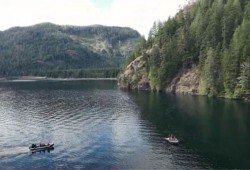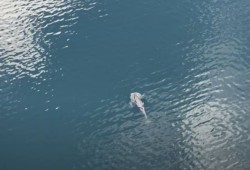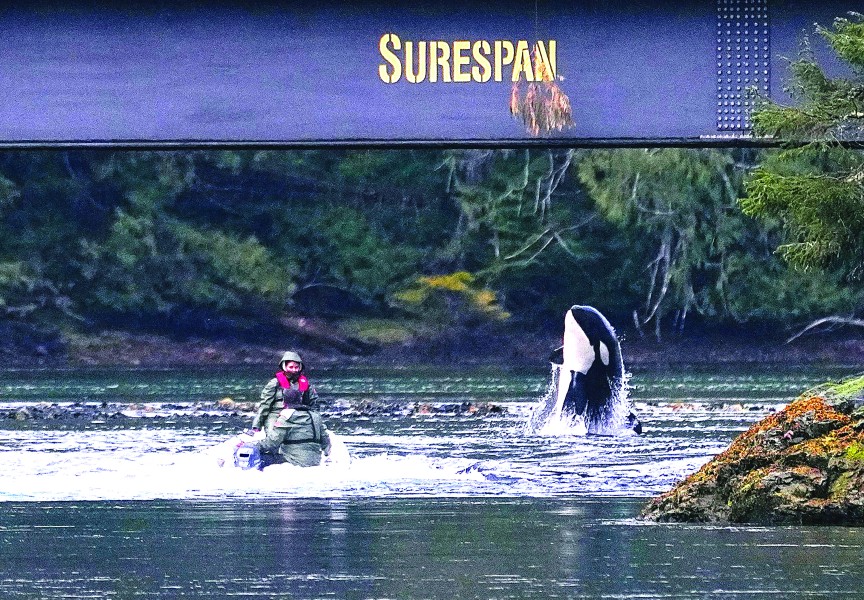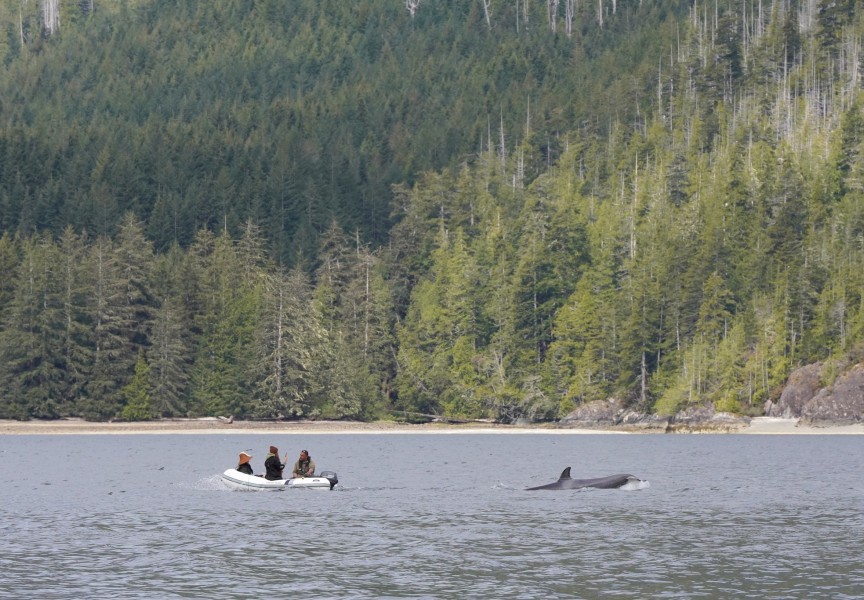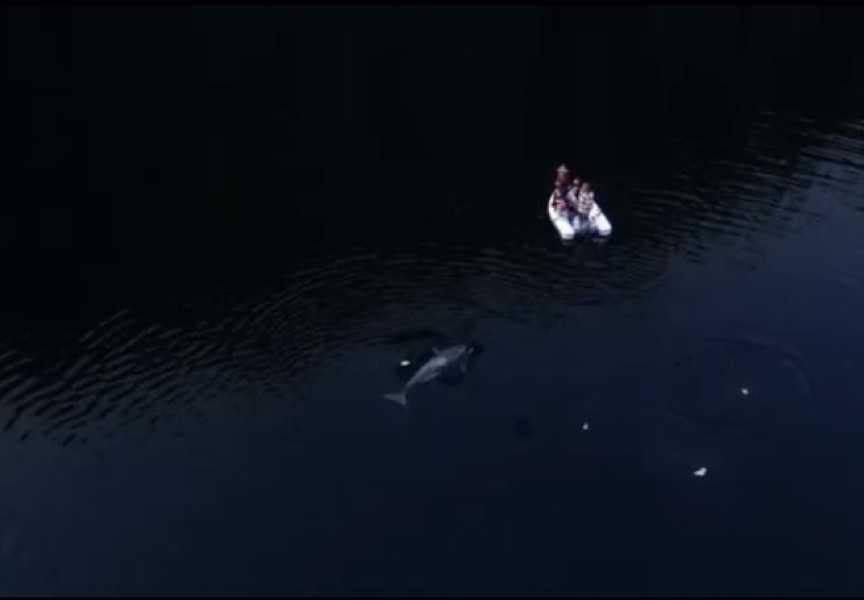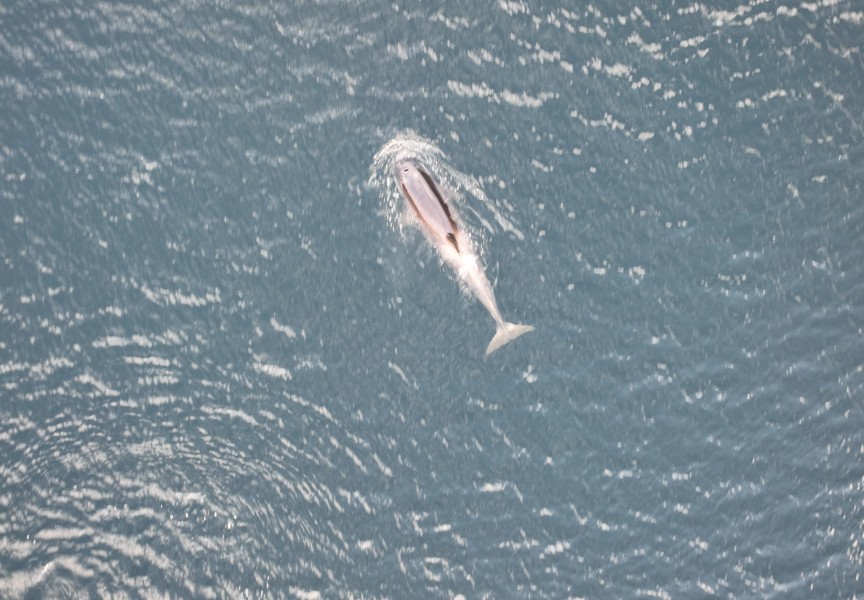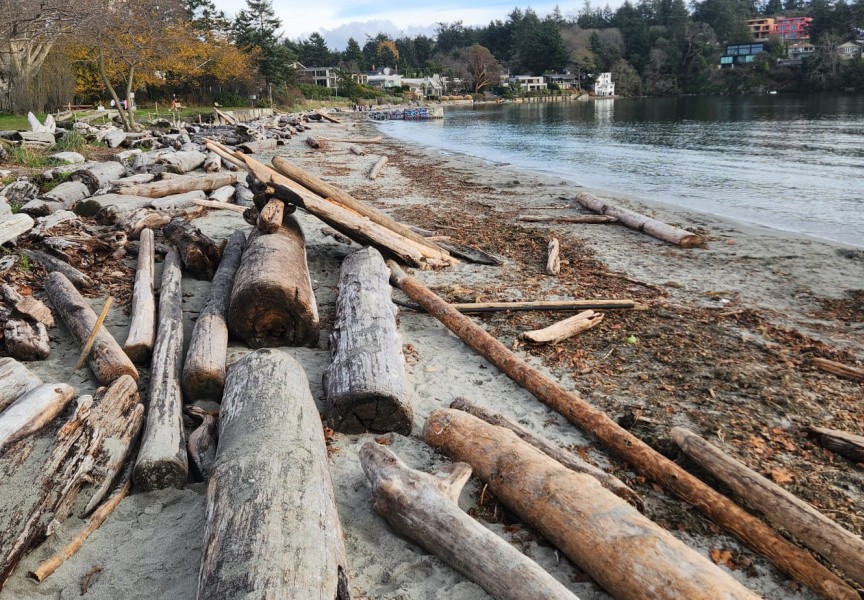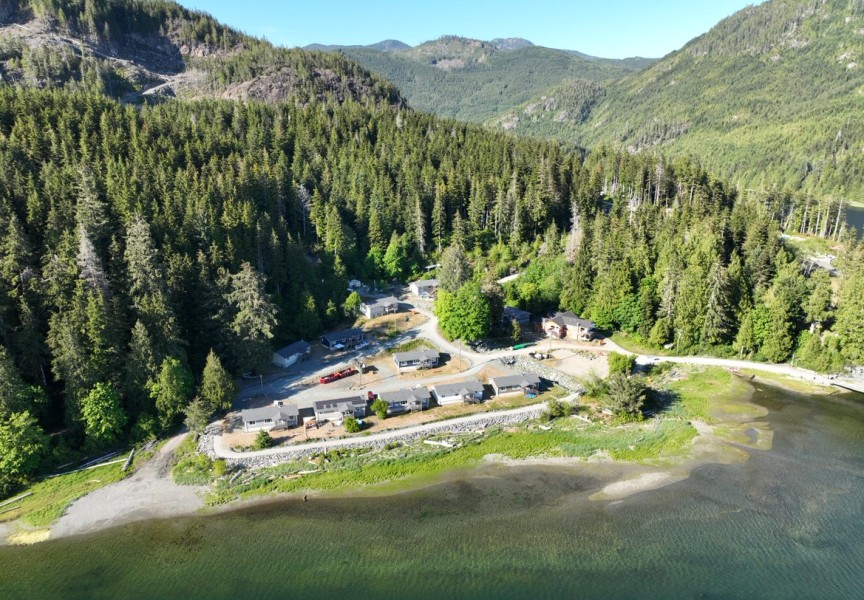More than a week after being stranded in a lagoon near Zeballos, where her mother died while being grounded on a sandbar, a young orca appears to remain healthy and active as a team closely watches the situation.
Marine mammal experts with Fisheries and Oceans Canada expect that the killer whale could last for a few weeks without being fed, based on previous incidents with stranded transient orcas. Transient, or Bigg’s killer whales, are a species with a growing population, according to the DFO. They mainly feed on pinnipeds like seals and sea lions, but can also eat birds, which the young and stranded orca was seen doing over her first week in the Little Espinosa Inlet in Ehattesaht territory.
“The whale was again seen with a bird in its mouth, so the team is assuming that this was eaten as Bigg’s whales are known to eat birds,” stated an update from the DFO on April 1. “It is not known if the whale is hunting and eating other types of prey.”
This is a promising sign, as feeding the young orca brings risk of it not learning to hunt in the wild.
“The reality is that helping the whale eat…the relationship might not be able to be broken,” said Ehattesaht Chief Councillor Simon John. “If it does eat from humans, it might get stuck with that.”
Members of the local Ehattesaht First Nation have named the whale kʷiisaḥiʔis (pronounced kwee-sa-hay-is), meaning ‘Brave Little Hunter’. Locals believe she ventured into the Little Espinosa Inlet with her mother during a high tide in the early morning hours of March 23, where the adult got stuck in a shallow section just down the road from the Ehattesaht village of Ehatis, which is next to Zeballos. Dozens of locals came to keep her wet and try to move her over, but sadly, the mother passed after 10 a.m. on March 23.
According to those at the scene, the mother had a dead seal in her mouth. She has been identified as a 14-year-old transient killer whale, while kʷiisaḥiʔis is believed to be one year and nine months old. kʷiisaḥiʔis was at least partially feeding off the mother, who was lactating. A necropsy revealed that the late mother was pregnant with another female.
The Ehattesaht have been working every day since with the neighbouring Nuchatlaht Tribe and visiting personnel from Fisheries and Oceans to find a solution for the young one, undergoing “intense planning sessions to weigh the options going forward,” according to a daily DFO update.
The First Nation has brought in resources from its company Strategic Natural Resource Consultants, one of the largest resource consulting firms in B.C. This has brought additional support with biologists, boats, radios and drone cameras.
Ehattesaht people have gathered by the water to send strength to the stranded young orca, and on March 27 paddled into the lagoon in a canoe to drum and sing for the killer whale.
“We wanted to provide some comfort to kʷiisaḥiʔis and to see if she would follow the canoe into Little Espinosa,” stated an update from the First Nation’s chief and council. “It was really powerful seeing our people and guests on the water. They were there with purpose and good hearts and even a rainbow came over the lagoon as the sun tried to shine.”
“Despite efforts to entice the whale out of the lagoon, it appears that the second sand bar at the causeway remains a significant concern for the whale calf named kʷiisaḥiʔis, who remains reluctant to pass over it into deeper waters,” stated DFO, referencing the shallow section where the young orca’s mother died.
The team has also tried to encourage the orca to leave the lagoon during high tide by playing recorded calls from a nearby pod of transients. This didn’t work as they had hoped.
“In the past, underwater playback sounds have been highly effective as an attractant to move whales out of a potentially dangerous situation,” stated DFO. “For the whale calf, kʷiisaḥiʔis (kwee-sa-hay-is), these proved to be repelling.”
The lagoon is almost three kilometres long, nearly one kilometre wide in a section and can be 100 feet deep during a high tide. But conditions can change quickly with the tides and weather patterns, and a rainy and windy Easter weekend forced the team to await better conditions before more attempts are made to lure the orca into the open ocean.
Success came within reach on Thursday, March 25, late in the afternoon at high tide. With 11 vessels in the lagoon, Oikomi pipes were suspended underwater, making a “wall of sound” to coax the orca towards the open ocean.
“Really the plan did work, but in the end little kʷiisaḥiʔis was not ready to move through the gap and into Little Espinosa,” stated Ehattesaht chief and council. “We did get her closer, but right close that flight or fight instinct took over and she swam back underneath us and went all the way back to the end of the lagoon. Everyone was pretty let down.”
“The whale calf broke through the wall of sound eventually to move back to the deep area of the lagoon,” stated DFO. “This was disappointing for all involved, however, it demonstrated the potential effectiveness of this technique and the capacity for the highly diverse team to work in tandem for a seamless execution.”
Physically transporting the animal is up for consideration, but this brings an undesirable risk.
“Trap-and-transport is one of the considerations on the table, however, it would not be utilized until other options have been exhausted due to its complexity and potential risks to the calf and the responders,” stated DFO.
As the team awaits more favorable conditions for their next attempt, reports and photographs from a whale watching group show that two related pods were in Barkley Sound on Sunday, March 31, heading north towards Ehattesaht territory.
“One of the pods identified is the juvenile calf’s matriline, the other is extended family,” stated DFO, based on a whale researcher’s examination.


